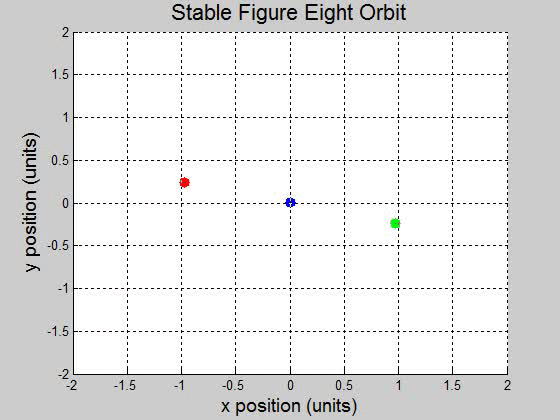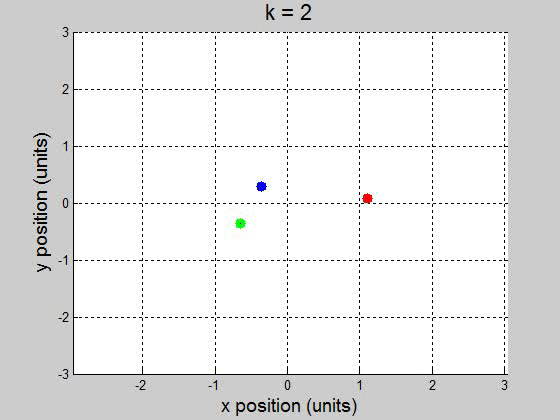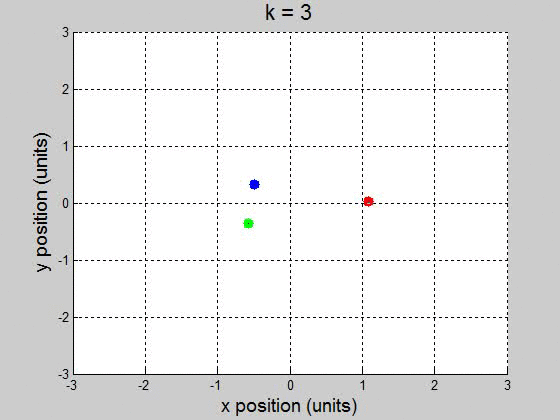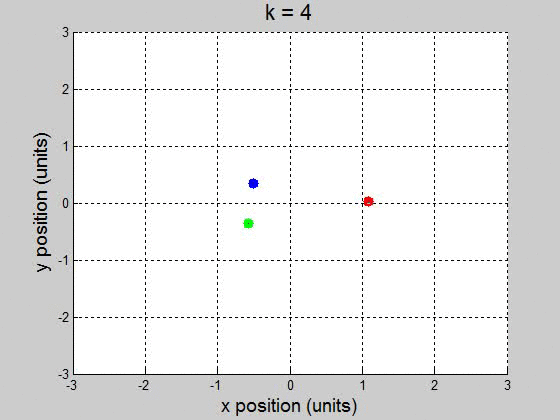|
|
George Mason UniversityConor Philip NelsonSource: Home > Classes > Math 447 > Project 3 > 6.3.11Math 447: Numerical Analysis
A remarkable three-body figure-eight orbit was discovered by C. Moore in 1993. In this configuration, three bodies of equal mass chase one another along a single figure-eight loop. Set the masses: \(m_1=m_2=m_3=1\) and gravity \(g=1\) (a) Adapt \(orbit.m\) to plot the trajectory with initial conditions: \((x_1,y_1)=(-0.970,0.243)\) . \((x_1',y_1')=(-0.466,-0.433)\) \((x_2,y_2)=(-x_1,-y_1)\) . \((x_2',y_2')=(x_1',y_1')\) \((x_3,y_3)=(0,0)\) . \((x_3',y_3')=(-2x_1',-2y_1')\). (b) Are the trajectories sensitive to small changes in initial conditions? Investigate the effect of changing \(x_3'\) by \(10^{-k}\) for \(1 \leq k \leq 5\). For each \(k\), decide whether the figure-eight pattern persists, or a catastrophic change eventually occurs. (a) 
(b) For the interval [0 100] with 10000 steps, it surprisingly worked fine for \(10^{-2}\) and less. It caused the orbit to drift to the +x direction, but it didnít break up the orbit. This might be a little difficult to show though, because it drifts way out. \(k=1\) 
\(k=2\) 
\(k=3\) 
\(k=4\) 
|